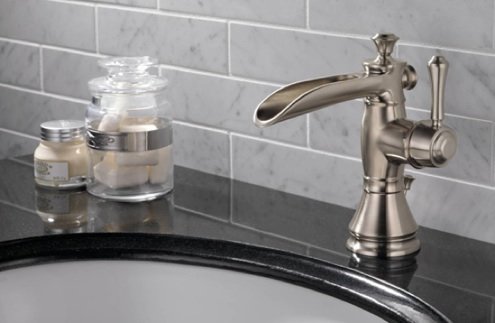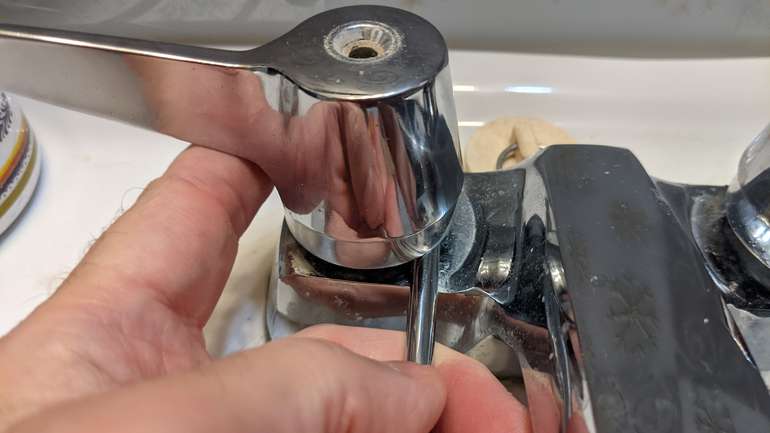Any individual seems to have their own thinking about Leaky Faucets: Why They Happen & What to Do About Them.

Dripping faucets could appear like a small aggravation, yet their effect exceeds just the annoyance of the noise. From drainage to sustaining unneeded economic costs and health dangers, disregarding a dripping tap can result in various effects. In this short article, we'll look into why it's vital to resolve this common household problem promptly and successfully.
Waste of Water
Ecological Effect
Trickling faucets contribute dramatically to water waste. According to the Environmental Protection Agency (EPA), a solitary faucet leaking at one drip per second can waste greater than 3,000 gallons of water each year. This not only pressures water sources but also affects communities and wild animals based on them.
Step-by-Step Guide to Taking Care Of a Dripping Tap
Tools Called for
Before attempting to fix a trickling tap, collect the needed devices, including a flexible wrench, screwdrivers, replacement parts (such as washers or cartridges), and plumber's tape.
Common Tap Issues and Their Solutions
Recognize the sort of faucet and the specific problem causing the drip. Typical issues consist of damaged washing machines, corroded valve seats, or faulty O-rings. Refer to supplier directions or on the internet tutorials for step-by-step guidance on repair services.
Financial Prices
Raised Water Expenses
Beyond the ecological effect, trickling faucets can pump up water expenses considerably. The collected waste gradually equates right into greater energy expenses, which can have been avoided with prompt repair work.
Prospective Residential Or Commercial Property Damages
Furthermore, extended dripping can result in harm to components and surfaces bordering the tap. Water buildup can trigger discoloration, corrosion, and even architectural problems if left neglected, leading to additional repair work prices.
Health Worries
Mold And Mildew and Mold Growth
The consistent existence of wetness from a dripping tap develops an optimal environment for mold and mildew and mold development. These fungi not only jeopardize interior air high quality but additionally pose wellness dangers, specifically for individuals with respiratory conditions or allergic reactions.
Waterborne Conditions
Stagnant water in dripping taps can come to be a breeding place for microorganisms and various other microorganisms, raising the threat of waterborne illness. Contaminants such as Legionella microorganisms prosper in stationary water, possibly resulting in major ailments when consumed or breathed in.
Do it yourself vs. Professional Repair work
Pros and Cons of DIY Repair Work
While some may attempt to fix a dripping faucet themselves, do it yourself repair work feature their very own set of challenges. Without appropriate knowledge and tools, DIY attempts can aggravate the issue or lead to incomplete repairs, extending the problem.
Advantages of Working With a Professional Plumber
Working with a professional plumber makes sure that the underlying cause of the leaking tap is addressed effectively. Plumbing technicians possess the knowledge and devices to diagnose and fix faucet concerns efficiently, conserving time and decreasing the risk of further damages.
Environmental Responsibility
Individual Payment to Conservation
Taking obligation for fixing trickling faucets straightens with broader efforts towards water preservation and environmental sustainability. Every individual's actions jointly make a substantial effect on maintaining valuable sources.
Lasting Living Practices
By prioritizing punctual repair services and embracing water-saving routines, individuals add to sustainable living methods that profit both present and future generations.
Safety nets
Normal Maintenance Tips
To avoid leaking faucets, carry out routine maintenance such as cleaning up aerators, evaluating for leakages, and replacing worn-out components promptly. In addition, take into consideration mounting water-saving devices or updating to much more reliable fixtures.
Importance of Prompt Fixes
Addressing trickling taps as soon as they're discovered stops additional water wastage and potential damage, eventually saving both water and money in the long run.
Impact on Building Worth
Understanding of Well-Maintained Building
Maintaining a property in good condition, consisting of addressing upkeep concerns like trickling faucets, boosts its perceived worth and charm among potential buyers or renters.
Influence on Resale Value
Residences with well-maintained plumbing components, consisting of taps, command greater resale values in the realty market. Attending to trickling taps can add to a favorable impact during residential or commercial property evaluations and negotiations.
Conclusion
Addressing a trickling faucet goes beyond mere benefit; it's a necessary step toward preserving water, minimizing financial prices, and safeguarding health and wellness and residential property. Whether through DIY fixings or specialist support, acting to repair leaking faucets is a little yet impactful way to promote liable stewardship of sources and add to a much healthier, a lot more lasting future.
How to Fix a Leaky Faucet: Step-by-Step Repair Guide
A leaky faucet may seem like a simple annoyance, but if it's not fixed promptly, that leak could cost hundreds to potentially thousands. From water damage to mold, mildew, and high water bills, even a tiny leak can be catastrophic if left unattended. Damage like this can even affect the overall value of your home, so it's important to take the right approach for leaky faucet repair. You may need the help of a plumber in some cases, but we've got a few tips you can try on how to fix a leaky faucet before calling the pros.
Four Faucet Types
When you're learning how to fix a leaky faucet, the first step is knowing what kind of faucet you're working with! There are four common types.
Cartridge Faucets
Cartridge faucets come in one- or two-handled varieties. In one-handled cartridge faucets, hot and cold water combines in a single cartridge. In the two-handled versions, hot and cold water are controlled separately and mixed in the faucet.
Ball Faucets
Ball faucets have a single lever you push up and down to adjust the pressure and rotate to change the temperature. A slotted metal ball controls the amount of water allowed into the spout.
Compression Washer Faucets
They're the oldest type of faucet, but they're still used in many homes — especially older ones. Compression faucets have two separate handles that, when turned, raise or lower the washer that seals a water valve. This valve stops water from flowing through the faucet when it is turned off.
Disc Faucets
Disc faucets rarely need to be repaired due to their maintenance-free design. The water flow is controlled by two discs — the upper one raises and lowers against a fixed lower disc, creating a watertight seal. If your disc faucet starts leaking, you may need to replace the seals or clean residue buildup from the inlets.
Fixing a Leaky Faucet
Step 1: Turn Off the Water
Whether you're learning how to fix a leaky bathtub faucet or how to fix a leaky kitchen faucet, always turn off the water supply to your working area when you're fixing a leak. The last thing you want is a flood added to your list of things to fix.
Look for the shutoff valves below your sink or around the tub and turn them clockwise to stop the water flow. If your faucet doesn't have shutoff valves, you may need to turn off the water for the whole house. Check to make sure it's off by turning the faucet on. If nothing comes out, you're ready to start the repair.
Step 2: Take Apart the Faucet
How you disassemble your faucet depends on the type of fixture you have. You can use a flathead screwdriver to remove the caps on top of the handle or handles for cartridge and compression faucets. Inside, you should see handle screws. Unscrew these with a screwdriver to remove the handle.
Disc- and ball-style faucets will typically have an inlet screw near the handle, and removing that will reveal the interior of the faucet.
Detach the Valve Stem
For cartridge- and compression-style faucets, you'll see the inner valve stem or cartridge once you remove the faucet handles. If you have a compression faucet, unscrew the brass valve stem. If you have a cartridge faucet, pull out the cartridge. If your cartridge has been in place for a while, it may require some tools or extra force to remove it due to mineral deposits.
Examine and Replace Parts
Once you've removed the parts, check them out to confirm what needs to be replaced. You may see corroded rubber washers, O-rings, stems, or cartridges. On a ball-style faucet, check the seats and springs for damage.
If you need to repair a leaky disc faucet, check the inlet and seals on the lower disc.
Once you determine what parts must be replaced, visit your local hardware store. Bring the damaged parts with you to ensure you can purchase the correct components to replace them.
Clean Valves and Faucet Cavity
If you've removed a stem or cartridge, you may notice mineral buildup in the faucet's threads. Use white vinegar to clean the valve seat by soaking it for a few minutes, then scrub it away with a soft toothbrush and rinse with warm water. You can also clean the interior of the faucet in the same way.
Reassemble the Faucet
Once your faucet is cleaned and the required parts have been replaced, it's time to reassemble it. Put the pieces back together and slowly turn the water supply back on. Doing this slowly is crucial because too much initial water pressure can damage the new hardware you've just installed.
https://homewarranty.firstam.com/blog/how-to-fix-leaky-faucet

I am just very interested by and I hope you appreciated the blog posting. Make sure you take the time to promote this blog entry if you enjoyed reading it. Thanks for your time. Kindly stop by our site back soon.